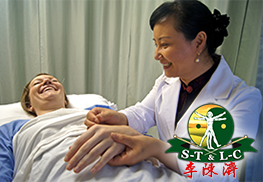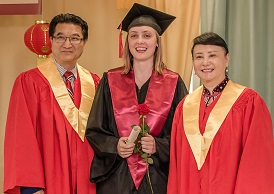Curriculum (2 year program)
Intensive Two-Year Acupuncture Diploma Program
The Intensive Two-Year Acupuncture Diploma Program and the Three-Year Acupuncture Diploma Program share the same curriculum - the major difference is the timeline. In the Intensive Two-Year Acupuncture Diploma Program, the clinical requirements run concurrent to the classroom and practical classes. In the Three-Year Acupuncture Diploma Program, the clinical requirements are fulfilled in the third year solely dedicated to meeting all the clinical requirements.
CCATCM’s acupuncture curriculum is similar to the Oshio College of Acupuncture and Herbal Medicine’s Acupuncture Diploma Program in Victoria, British Columbia. British Columbia was the first regulated province in Canada. The British Columbia board exam requirement is 1900 hours for a registered acupuncturist. The curriculums at CCATCM is 2220 hours, offering an additional 320 hours of enrichment.
Part of the advanced studies enrichment includes:
a) Acupuncture, herbology, and herbal formulas student research project (these hours of acupuncture and herbal medicine research help reinforce the course hours)
b) Acupuncture/acupressure research thesis
c) Acupressure massage
To help bring learning to life, CCATCM has incorporated 135 hours of acupressure training into the curriculum. This allows students to apply meridian theory and acupuncture point theory to the human body early in the program through acupressure clinical practice.
Comparing CCATCM’s Two Acupuncture Programs
- Students of both CCATCM Acupuncture Diploma Programs sit in the same classroom and attend the same academic and practical classes through years one and two.
-
The difference between the two CCATCM Acupuncture Diploma Programs is the clinical scheduling:
Three-Year Acupuncture Diploma Program: Years one and two are completely dedicated to academic/practical classroom learning, while the third year is dedicated to clinical practice.
Intensive Two-Year Acupuncture Diploma Program: Clinics run concurrently with the academic and practical classes through years one and two. Clinics also run during the summers. - All students have to attend 60 hours per year of weekend or evening special events (i.e. open houses, health shows, etc.) to learn to promote the profession and to educate and serve the public.




